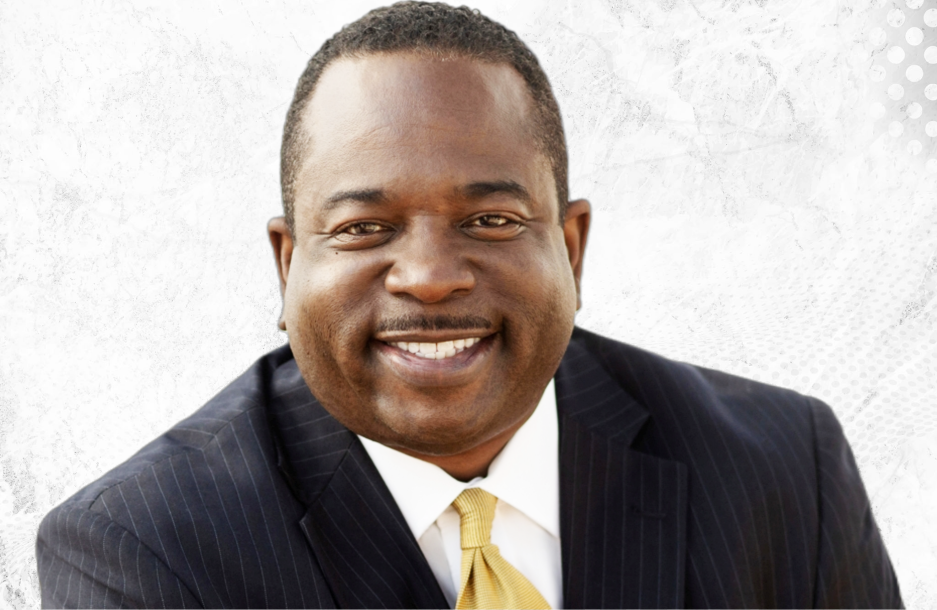Tennessee Government CCO Karl Houston on deploying data to shape an integrated strategy
Houston shares his cross-functional, audience-first approach to storytelling and building brand affinity.

Being able to analyze data and speak the language of numbers is a crucial component of effective comms leadership. But while most get why being able to codify your outcomes in the larger narrative of business growth requires some measurement acumen, not all understand exactly how to measure in partnership with other functions and bring those outputs together.
Karl Houston, Chief Communications Officer for the Tennessee State Government, understands this better than most. For over two decades, Houston served Goodwill Industries of Middle Tennessee as the senior director of donations and head of Marketing, a crash course in audience segmentation that would inform his subsequent leadership roles as VP of Marketing and Communications at the Nashville Area Chamber of Commerce and CCO at the State of Tennessee.
Houston shared more about his journey ahead of his keynote panel at Ragan’s Employee Experience Conference in Nashville this August.
This conversation has been edited for length and clarity.
Justin Joffe: During your time as marketing director at Goodwill Industries of Middle Tennessee, you really tapped into the relationship between first-party, third-party and mobile data, and then applied those results to an integrated, strategic plan.
Can you talk a little bit about what you learned along the way from a data fluency perspective, and how that informs the communications seat where you now sit?
Karl Houston: I really see data as actionable insights that can inform how you engage with stakeholders to create a personalized experience for them and drive strategy. At Goodwill, we used data to gain a deep understanding of our stakeholders, which informed our strategic approach. This focus on personalized experiences was a key driver in our market share, doubling from 32% to 64%.
We used first-party, third-party, and mobile data to understand our customers across multiple subbrands, each with very different customer segments. As data students, we studied our customers through several means. For example, we surveyed customers to understand their voice at various touchpoints, and we segmented customers into groups based on geographical and psychographic data.
We recognized the importance of aligning this data with our business needs, ensuring it was not just data for data’s sake but data that added value to our operations. Also, with customer expectations changing rapidly and the battle for their attention becoming more intense, we felt like integrating data wasn’t an option but necessary for our communication strategy.
Our data-driven approach was a game-changer. It was at the core of our communication strategy. The key is to get the right message to the right customer at the right time through the right channel. The data allowed us to craft more informed, targeted communication and engagement strategies, which led to a significant increase in customer engagement. This success was reflected in our impressive growth.
How did that segmentation play out on the communications side?
KH: We utilized segmentation from a communication standpoint to drive messaging to our customers. By segmenting customers based on their preferences, we created targeted messaging and delivered it through their preferred communication channels.
You were both managing day-to-day operations and also navigating strategy back then. What you’re what you’re talking about is happening at such a high level, but it needs to be executed on. You can’t do it all yourself. You need to rely on people. But shifting work left can be a challenge for many of communicators, particularly middle managers who are invited to consult on strategy and speak to matters material to the business while are also doing work and rolling up their sleeves.
How did you think about that balance?
KH: Leading a successful team requires a delicate balance of managing daily operations and navigating long-term strategy. Throughout my career, I’ve been fortunate to have exceptional teams, allowing me to focus on strategic planning and decision-making.

As a leader, I believe it all begins with having a clear vision and priorities that align with organizational goals. Communicating your vision to the team is crucial, empowering them to excel and supporting their development. Also encouraging your team to innovate and take calculated risks is vital. I believe that if you have the right people in the right roles and the right processes in place, the balancing act becomes more manageable.
On the flip side, as a leader, it’s essential to be mindful of the challenges: embracing change and conflict, effective time management, clear communication, delegating tasks, staying agile and focused, being proactive, and leveraging technology for efficiencies.
A big piece of that involves codifying their scope of work and holding it sacred, too. That way they know what’s expected of them and they know where they sit on the org chart. The delegation process seems to fall apart when those lines get blurred, employees aren’t really sure what’s on them versus what’s on their colleagues and the trust suffers.
KH: That is a great point, and it goes back to ensuring that you communicate your vision and priorities and that each individual on a team understands their role and how important they are to the team’s success.
For example, annually, as a part of my team’s strategic planning process, we will conduct a SWOT and TOWS analysis. We look at our processes using the RACI model, which allows us as a team to see who’s responsible for a particular task, who’s accountable for the overall success of a process, who needs to be consulted, and then who needs to be informed. If we have a particular project, it makes it very clear who the go-to person is in order to get it done. From there, we create SOPs for our critical processes for continuity. Having good processes in place, good team members who communicate with each other, and an open-door policy helps to eliminate ambiguity in our processes and the need to micro-manage your team.
Your career saw both marketing and comms in your remit, and it stayed that way for a while before you switched industries. When you transitioned to the Nashville Chamber of Commerce, what translated over? And what did you have to learn and flex into to serve a different market?
KH: First, over my career, I have learned that the core principles of marketing and communications remain constant. Marketing drives growth, while communications revolve around cultivating relationships. It’s all about understanding your audience and delivering value that deeply resonates with them.
My transition from a company serving both B2C and B2B markets to one exclusively focused on B2B required me to leverage my transferable skills and experiences. First, it involved acquainting myself with a new industry, its nearly 2,000 customers, and their needs. My networking and relationship-building skills were essential. Value delivery was important because my team had to effectively communicate how the Chamber’s services added value and addressed the distinctive challenges of each business. Content management and public relations were crucial skills that translated into my work at the Chamber.
Starting with stakeholder needs and skills makes sense. It seems like that was a step to government for you, too. Now you’re the CCO for the Tennessee State Government. Is there a precedent for this type of role in government?
KH: As I understand it, the role was reclassified for a more strategic focus on communications and to create an employer brand for Tennessee State Government. In essence, it was a new role for the Department of Human Resources.
It may be unusual to see the CCO “seat” in government, but I believe it is becoming more apparent how crucial the role plays in shaping the narrative around government policies and actions.
I imagine internal stakeholders in different departments and agencies are a big piece of that narrative. Is there a big educational component to this work?
KH: This is my first venture into the public sector and the HR world, so there was a steep learning curve to understand the innerworkings of such a large and complex organization and the field of human resources. I will also note that my time at the NACC laid an excellent foundation for working in state government because I acquired a lot of knowledge about Nashville and the state’s economy and commerce in general.
My transition into this role has been amazing, thanks to the incredible leadership and culture in the Department of Human Resources.
Much of what we’ve spoken about today mirrors the theme of the keynote panel we’re having in Nashville this August—about connecting with stakeholders and bringing those who aren’t in lockstep with your vision back to the center. Can you talk a little bit more about that process, and what you’ve done from the C-seat to make sure the right departments are communicating about the right issues at the right time on behalf of the brand?
KH: Yes, communication is so important to having an engaged workforce. As Chief Communications Officer, I oversee internal communications for over 43,000 dedicated state employees and provide strategic communication support for the department. We are committed to creating and communicating a compelling employer brand and employee value proposition to attract, inspire, and retain top talent. We see our communication strategy as an opportunity to build upon a strong culture of engagement with our employees. Communication should be two-way between the organization and the employee so that they know their importance to the overall mission and how their work is very purposeful for the state.
How important is UGC platforming the departments and civil servants who don’t often get the spotlight?
KH: Employee advocacy is a big part of it, as well as ensuring that there is a platform for employees to share their stories about their successes. Within state government, there are so many incredible employee stories and ambassadors. So, we recognize that there is an opportunity for the state to capitalize on telling the story about working for Tennessee State Government, how meaningful it is to work for it, and the state’s vision to be the best place to work.
I’ve only been with the state for about two years, but it reminds me a lot of my work in the nonprofit sector. It’s very mission-driven, it’s really about serving, and it’s all purposeful work.
Storytelling is such an interesting and substantive concept, but some communicators and thought leaders overuse it. You’re talking about storytelling that’s fortified by data and research, and that’s a different game. When communicators unite disparate data points together to prove a point, to tell a story that’s backed by numbers, it doesn’t just become a voice exercise or a brand exercise — it becomes a reinforcement of something you already know to be true,
KH: I agree that storytelling is an interesting concept, but it is not a new tool. Storytelling has been a part of our history for years and has been used as a powerful way to appeal to our emotions. It is how we relate to one another through sharing things we have in common, our experiences, and, as you mentioned, things we already know to be true. In a nutshell, it is a communication tool that delivers a message.
Thank you, Karl. What advice would you give to somebody who wants to ascend to the C-seat like yourself?
KH: I would encourage them to have a vision, maintain a learning mindset, embrace adaptability, stay abreast of emerging trends such as AI, know what value they bring to the organization, and always have a professional development plan. Above all, seek to be excellent.
I am reminded of a favorite quote from the legendary coach Vince Lombardi that I have often shared with my teams – “Perfection is not attainable. But if we chase perfection, we can catch excellence.”
Join Houston in conversation with other C-suite leaders this August at Ragan’s Employee Experience Conference in Nashville.
Justin Joffe is the editorial director and editor-in-chief at Ragan Communications. Follow him on LinkedIn.







